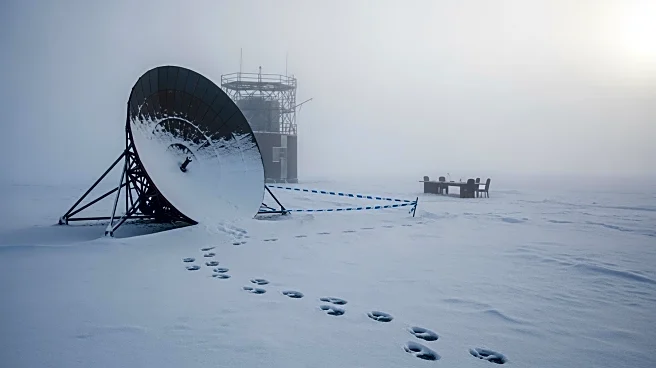What's Happening?
Geologists have raised concerns about the Tintina Fault in Canada's Yukon Territory, which has shown signs of renewed seismic strain after being dormant for over 12,000 years. A recent study published
in Geophysical Research Letters indicates that the fault could trigger a magnitude 7.5 earthquake, similar to the 2025 Myanmar earthquake. The Tintina Fault stretches over 1,000 kilometers from British Columbia to central Alaska and has been accumulating tectonic strain at a rate of 0.2 to 0.8 millimeters per year. Researchers from the University of Victoria, University of Alberta, and the Geological Survey of Canada are urging a revision of seismic hazard models for the region.
Why It's Important?
The potential activation of the Tintina Fault poses significant risks to infrastructure, including strategic mining zones, vital road corridors, and ecologically sensitive areas in the Yukon Territory. If a major earthquake occurs, it could have wide-reaching implications for infrastructure, risk models, and seismic policy. The study challenges the assumption that this segment of western North America is tectonically quiet, highlighting the need for updated seismic hazard frameworks. The findings underscore the importance of understanding tectonic threats, especially as climate changes and infrastructure expands into historically neglected regions.
What's Next?
Researchers recommend targeted paleoseismological studies to assess seismic recurrence intervals and the influence of glacial isostatic adjustment on rupture timing. These studies could help determine whether earthquake cycles on the Tintina Fault are accelerating, stabilizing, or changing in character due to climate-linked geological feedbacks. The scientific community is urged to revisit seismic hazard models for the Yukon and adjacent regions to better prepare for potential seismic events.
Beyond the Headlines
The discovery of the Tintina Fault's activity highlights the limits of traditional fault classification systems and the need for continual updates to seismic hazard frameworks in intraplate regions. The research emphasizes the importance of understanding tectonic threats as the climate changes and infrastructure expands into historically neglected areas.












